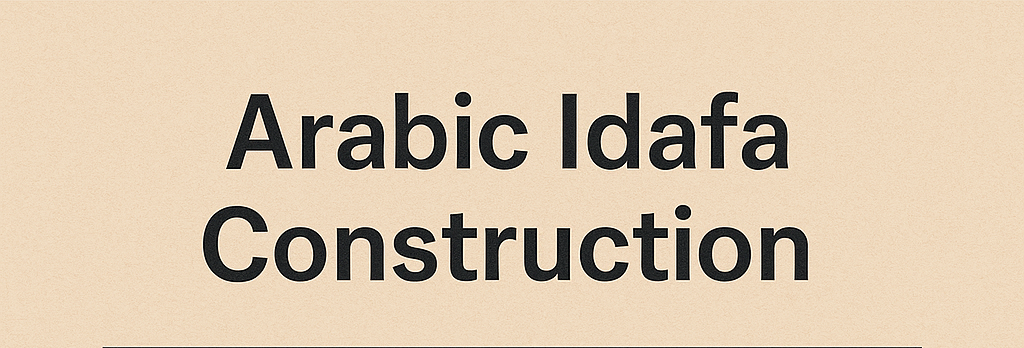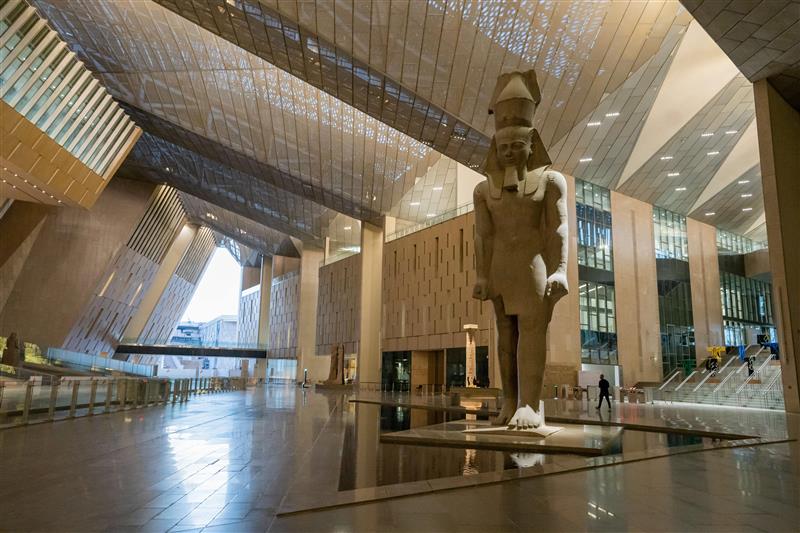A Clear Guide to “الإضافة” (the Arabic Idafa Construction) for Non-Native Speakers

Learning Arabic grammar can feel overwhelming at first, especially for non-native speakers. One of the most essential—and frequently used—structures in Arabic is الإضافة, also known in English as the Arabic Idafa construction. Mastering this structure not only helps learners understand sentence building but also improves reading, writing, and comprehension skills.
In this comprehensive guide, we’ll break down what Idafa is, how it works, and how you can use it effectively in your Arabic communication. Whether you’re a beginner or an intermediate learner, this blog will help you confidently understand and apply the Arabic Idafa structure.
📘 What Is the Arabic Idafa Construction?
The term الإضافة (Idafa) in Arabic literally means “addition” or “annexation.” In grammar, it refers to a construction where two or more nouns are linked to show possession or a relationship between the words.
For example:
-
بيت الطالب — the student’s house
(“بيت” = house, “الطالب” = the student)
Here, “بيت” is the first noun (called المُضاف) and “الطالب” is the second noun (المُضاف إليه). Together, they form a single phrase where the second noun defines or possesses the first.
This is the core of the Arabic Idafa structure.
🔍 Basic Rules of Arabic Idafa
Understanding the rules of Idafa is crucial to using it correctly. Here are the most important principles:
-
No Definite Article on the First Noun
The first noun in the Idafa construction never takes “ال” (the definite article), even if the phrase is definite.✅ Correct: كتاب الطالب (the student’s book)
❌ Incorrect: الكتاب الطالب -
The Last Word Determines Definiteness
If the second noun has “ال”, the whole phrase is definite.
If the second noun is indefinite, the whole phrase is indefinite.-
مفتاح السيارة — the car’s key (definite)
-
مفتاح سيارة — a car’s key (indefinite)
-
-
No Tanween on the First Word
The first noun in an Arabic Idafa phrase never takes tanween (double vowel endings like -ٌ or -ًا).✅ Correct: باب بيت (a house’s door)
❌ Incorrect: بابٌ بيت
🧠 Why Is Arabic Idafa Important?
You’ll encounter Arabic Idafa all the time—in the Qur’an, in news headlines, in books, and in daily speech. It helps form noun phrases that express:
-
Ownership or possession: كتاب المعلم (the teacher’s book)
-
Specific types: باب المدرسة (the school door)
-
Categories or subtypes: صوت الإنسان (the human voice)
Mastering this structure will make your Arabic sound more fluent and natural.
🧱 Structure of Arabic Idafa
Let’s break down the key elements of an Arabic Idafa phrase.
| Term | Arabic Term | Role in Phrase |
|---|---|---|
| First Noun | المضاف | The noun being possessed |
| Second Noun | المضاف إليه | The possessor or qualifier |
Here are a few examples:
| Arabic Phrase | Translation |
|---|---|
| بيت الرجل | The man’s house |
| سيارة المدير | The director’s car |
| وظيفة الطالب | The student’s job |
You can also form longer Idafa chains:
-
مفتاح باب بيت المعلم — the key of the door of the teacher’s house
These chains are common in formal Arabic and can be challenging at first—but once you understand the building blocks, you’ll be able to decode them easily.
📚 Real-Life Examples of Arabic Idafa
To really understand how the Arabic Idafa works, let’s see some real-world examples.
-
جريدة الأخبار — The News Newspaper
-
لغة القرآن — The Language of the Qur’an
-
قانون الدولة — The Law of the State
In each case, the first noun is being clarified or defined by the second noun.
🛠️ Common Mistakes to Avoid
-
Adding “ال” to the first noun
❌ الكتاب الطالب
✅ كتاب الطالب -
Using tanween on the first noun
❌ بابٌ البيت
✅ باب البيت -
Incorrect word order
The Idafa is always structured: possessed + possessor — not the other way around.
🎓 Practice Time: Build Your Own Idafa Phrases
Try forming some phrases using this pattern:
-
Car of the teacher → سيارة المعلم
-
The title of the book → عنوان الكتاب
-
The color of the flower → لون الزهرة
Practicing simple combinations will strengthen your understanding and get you comfortable using the Arabic Idafa naturally.
🌐 Learn Arabic the Smart Way
If you’re serious about mastering Arabic grammar—especially structures like Arabic Idafa—you need the right learning environment. At Al Arabiya Institute, we specialize in teaching Arabic to non-native speakers using proven methods that build confidence and fluency.
Here’s why students love Al Arabiya Institute:
-
✅ Expert Arabic teachers
-
✅ Affordable pricing
-
✅ Flexible schedules
-
✅ Free trial lessons to get started
Our online Arabic courses are designed with learners like you in mind—so you can go from beginner to advanced without stress.
✅ Summary: Mastering the Arabic Idafa
Let’s wrap up the key takeaways from this guide:
-
Arabic Idafa is a foundational part of Arabic grammar that links two nouns together.
-
The first noun (المضاف) never takes “ال” or tanween.
-
The second noun (المضاف إليه) determines definiteness.
-
This structure is everywhere in Arabic—from books and media to religious texts and conversations.
-
Practice and exposure are the keys to mastering it.
🚀 Ready to Master Arabic?
Understanding the Arabic Idafa is just one step toward fluency. Join hundreds of students who are already learning Arabic effectively with Al Arabiya Institute — the best place for affordable, high-quality Arabic online courses, complete with free trial lessons!
👉 Visit Al Arabiya Institute and book your free trial lesson now!







